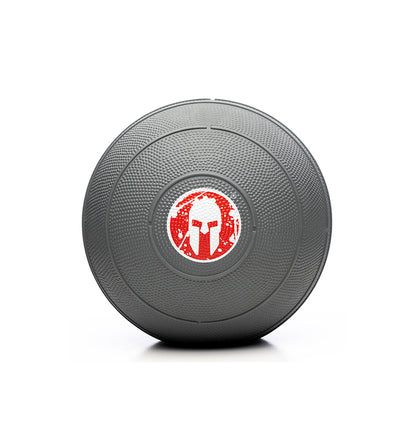3 Essential Slam Ball Workouts

What a Slam Ball Workout Can Do For You
There is no better way to get out some aggression after a long day than throwing things. Luckily, using a slam ball — made in weights from a 6 lb slam ball to a 20 lb slam ball to a 50 lb slam ball to upward of 100 pounds — is equal parts stress relieving and good for your body. You’ve likely seen it in the gym loads of times, and maybe you haven’t given it a second chance. But Cameron Yuen, DPT, of Bespoke Physical Therapy in New York City, says you definitely should.
“Slam balls are extremely versatile, easy to use, and effective,” he says. “Depending on your fitness goals and the size of slam balls available, you can use them to develop power, strength, or endurance.”
Plus, they can be super helpful for developing muscular endurance. If your grip is usually the first to go when performing high-repetition lifts (or perhaps, getting over tough obstacles), consider replacing the dumbbells or barbells with a slam ball, which is a bit easier on the hands because your wrists and forearms help support the weight.
How to Choose Your Weight
As with other exercises in the gym, choosing the right weight for your slam ball workout can feel a tad intimidating. If you are looking to develop power, choose a moderately heavy slam ball paired with an explosive exercise, suggests Yuen. For power, try to slam the ball as fast and as hard as you can for three to five repetitions, then rest for two to three minutes. If you can't get to a gym, you can buy a slam ball or a range of slam balls. They're an affordable piece of exercise equipment.
If strength is your goal, pick a slam ball that you can lift for five to 10 repetitions and choose an exercise that would ordinarily require a barbell or dumbbell. “Due to the shape of the ball, these exercises will require additional muscle recruitment for stability and coordination,” says Yuen.
Here, Yuen offers a workout for three different areas of focus: power, strength, and endurance. Before you get to it, remember: start slow. “It’s important to start slow to get a good feeling for the exercise form and how the coordination differs when using a slam ball,” he says. “The faster you move, the more force you produce, and this has the potential to increase the risk of injury.”
For Power
Rotational Chest Pass
Try: Four sets of three to five repetitions.
Do it: Stand so that your body and a wall create a 90-degree angle, holding a slam ball with both hands at chest level, elbows flexed. Contract your glutes and rotate your body quickly and explosively toward the wall, pivoting your back leg as your body turns. Use your entire upper body to push the ball toward to the wall as hard as possible, releasing it. Be prepared to react quickly! Catch the ball and repeat.
The expert says: “This exercise generates total body power as you drive through the floor, rotate the hips and chest pass the ball into the wall. The goal is to generate as much power as possible, so choose a moderately heavy ball and perform three to five repetitions per set. If you feel fatigued or if your power output decreases, rest for two to three minutes or until you are fully recovered.”
For Strength
Front Squat
Try: Four sets of three to five repetitions.
Do it: Hold a heavier slam ball against your chest with your back straight and core muscles engaged. The ball will pull you forward throughout the squat, so your core muscles will be working extra hard throughout. Lower down toward the floor until your thighs are below parallel. Push through the heels to return to the starting position.
The expert says: “Since you have to support and squeeze the ball with your palms, your chest, biceps, and forearms have to work as well, turning a squat into a total-body strength exercise.”
For Endurance
Loaded Carry
Try: One minute of walking; rest one minute; repeat four times.
Do it: Hug a lighter slam ball against your chest with your hands gripped together, your back straight, and your core muscles engaged. Keep this controlled posture as you walk across the gym, seeing how many laps you can get.
The expert says: “This exercise will increase your ventilation and heart rate while also training the endurance of your leg and core muscles.”

